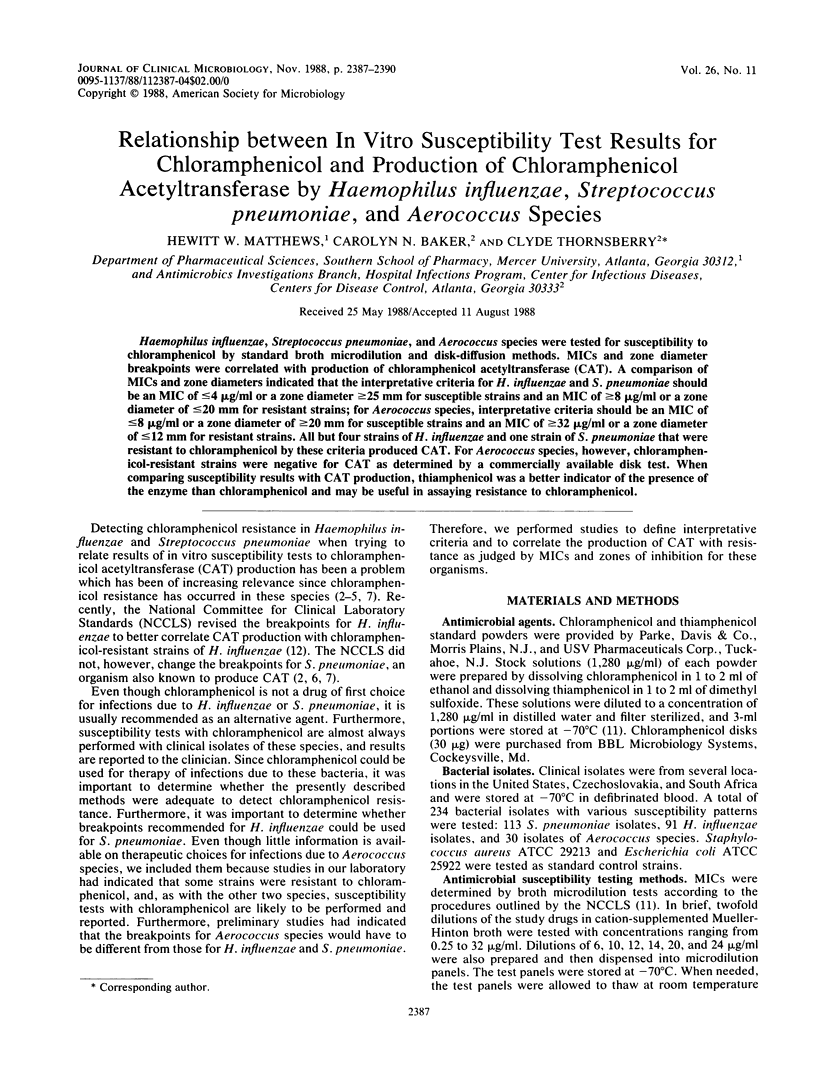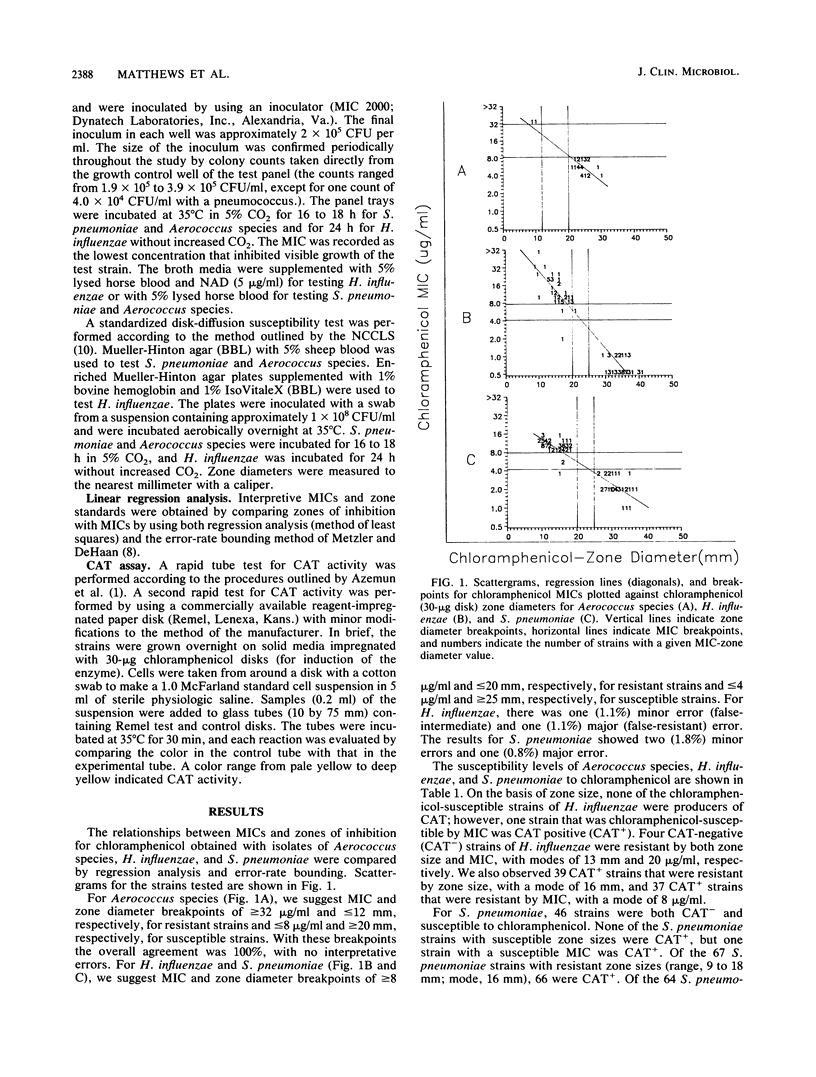Abstract
Haemophilus influenzae, Streptococcus pneumoniae, and Aerococcus species were tested for susceptibility to chloramphenicol by standard broth microdilution and disk-diffusion methods. MICs and zone diameter breakpoints were correlated with production of chloramphenicol acetyltransferase (CAT). A comparison of MICs and zone diameters indicated that the interpretative criteria for H. influenzae and S. pneumoniae should be an MIC of less than or equal to 4 micrograms/ml or a zone diameter greater than or equal to 25 mm for susceptible strains and an MIC of greater than or equal to 8 micrograms/ml or a zone diameter of less than or equal to 20 mm for resistant strains; for Aerococcus species, interpretative criteria should be an MIC of less than or equal to 8 micrograms/ml or a zone diameter of greater than or equal to 20 mm for susceptible strains and an MIC of greater than or equal to 32 micrograms/ml or a zone diameter of less than or equal to 12 mm for resistant strains. All but four strains of H. influenzae and one strain of S. pneumoniae that were resistant to chloramphenicol by these criteria produced CAT. For Aerococcus species, however, chloramphenicol-resistant strains were negative for CAT as determined by a commercially available disk test. When comparing susceptibility results with CAT production, thiamphenicol was a better indicator of the presence of the enzyme than chloramphenicol and may be useful in assaying resistance to chloramphenicol.
Full text
PDF



Selected References
These references are in PubMed. This may not be the complete list of references from this article.
- Azemun P., Stull T., Roberts M., Smith A. L. Rapid detection of chloramphenicol resistance in Haemophilus influenzae. Antimicrob Agents Chemother. 1981 Aug;20(2):168–170. doi: 10.1128/aac.20.2.168. [DOI] [PMC free article] [PubMed] [Google Scholar]
- Dang-Van A., Tiraby G., Acar J. F., Shaw W. V., Bouanchaud D. H. Chloramphenicol resistance in Streptococcus pneumoniae: enzymatic acetylation and possible plasmid linkage. Antimicrob Agents Chemother. 1978 Apr;13(4):577–583. doi: 10.1128/aac.13.4.577. [DOI] [PMC free article] [PubMed] [Google Scholar]
- Doern G. V., Daum G. S., Tubert T. A. In vitro chloramphenicol susceptibility testing of Haemophilus influenzae: disk diffusion procedures and assays for chloramphenicol acetyltransferase. J Clin Microbiol. 1987 Aug;25(8):1453–1455. doi: 10.1128/jcm.25.8.1453-1455.1987. [DOI] [PMC free article] [PubMed] [Google Scholar]
- Doern G. V., Jorgensen J. H., Thornsberry C., Preston D. A. Prevalence of antimicrobial resistance among clinical isolates of Haemophilus influenzae: a collaborative study. Diagn Microbiol Infect Dis. 1986 Feb;4(2):95–107. doi: 10.1016/0732-8893(86)90143-4. [DOI] [PubMed] [Google Scholar]
- Doern G. V., Jorgensen J. H., Thornsberry C., Preston D. A., Tubert T., Redding J. S., Maher L. A. National collaborative study of the prevalence of antimicrobial resistance among clinical isolates of Haemophilus influenzae. Antimicrob Agents Chemother. 1988 Feb;32(2):180–185. doi: 10.1128/aac.32.2.180. [DOI] [PMC free article] [PubMed] [Google Scholar]
- Garau J., Linares J., Dominguez C. Chloramphenicol-resistant pneumococci. Lancet. 1981 Jul 18;2(8238):147–148. doi: 10.1016/s0140-6736(81)90324-x. [DOI] [PubMed] [Google Scholar]
- Hansman D. Chloramphenicol-resistant pneumococci in West Africa. Lancet. 1978 May 20;1(8073):1102–1103. doi: 10.1016/s0140-6736(78)90950-9. [DOI] [PubMed] [Google Scholar]
- Metzler C. M., DeHaan R. M. Susceptibility tests of anaerobic bacteria: statistical and clinical considerations. J Infect Dis. 1974 Dec;130(6):588–594. doi: 10.1093/infdis/130.6.588. [DOI] [PubMed] [Google Scholar]


